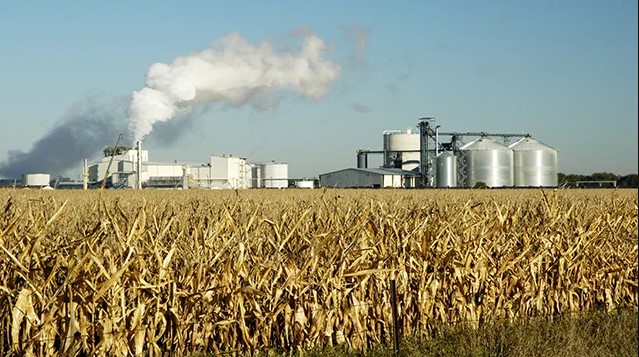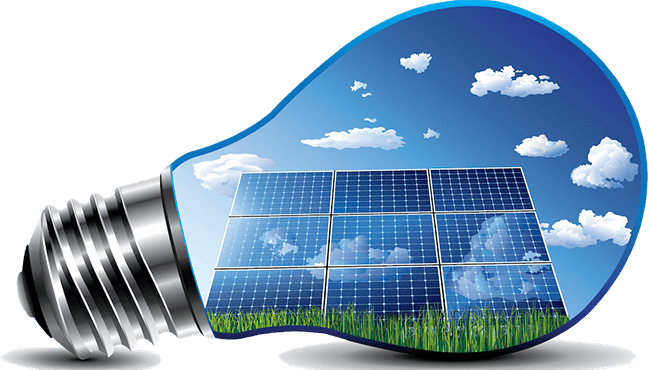Ethanol also called ethyl alcohol, grain alcohol, drinking alcohol, or simply alcohol is one of the principal biofuels, which is naturally produced by the fermentation of sugars by yeasts or via petrochemical processes such as ethylene hydration. It has also medical applications as an antiseptic and disinfectant. Ethanol is used as a chemical solvent and in the synthesis of organic compounds, apart from being an alternative fuel source.
Ethanol is an organic chemical compound, that is high in oxygen content, which therefore allows an engine to more thoroughly combust fuel. It is mixed with regular fuel in different quantities and can help reduce vehicular emissions. Also, since it is plant-based, it is considered to be a renewable fuel.
In 2001, the central government had “launched pilot projects wherein 5 percent ethanol blended petrol was supplied to retail outlets”. The success of field trials eventually paved the way for the launching of the Ethanol Blended Petrol (EBP) Programme in January, 2003 for sale of 5 percent ethanol blended petrol in nine States and four UTs.
Presently, Ethanol makes up 10% of the petrol we use in our vehicles. The Union Cabinet this year in May, approved amendments to the National Policy on Biofuels, 2018, to advance the date by which fuel companies have to increase the percentage of ethanol in petrol to 20%, from 2030 to 2025.
The policy of introducing 20% ethanol will take effect from April from next year. The Centre has also released an expert committee report on the Roadmap for Ethanol Blending in India by 2025.The roadmap proposes a gradual rollout of ethanol-blended fuel to achieve E10 fuel supply by April 2022 and phased rollout of E20 from April 2023 to April 2025.
What is biofuel?
Biofuel is considered pure and the easiest available fuels on planet earth. Biofuels are obtained from biomass like wood and straw, which are released by direct combustion of dry matter and convert into a gaseous and liquid fuel. Other sources include organic matter like sludge, sewage and vegetable oils matter, which can be converted into biofuels by a wet process like digestion and fermentation.
Wood, straw and domestic refuse are used as a source of heat and energy. Biofuels can also be produced from animal fats, plant wastes and other organic wastes produced from living organisms.
This process is divided into three categories:
- First-generation: Biofuels are primarily produced from edible sugar, starch and other food crops are grown on arable land.
- Second generation: Biofuels are produced from non-edible plant materials, such as plant dry matter or woody biomass, or agricultural residues and wastes.
- Third generation: Biofuels are primarily produced from algae and microbes. Algal fuels have high yields.
Ethanol Blended Petrol (EBP) Programme
The central government, under the leadership of Prime Minister Narendra Modi, in line with its energy security, climate change and rural economy enhancement goals, has initiated multi-pronged reforms to boost Ethanol usage in the country. The government has been promoting the use of ethanol as a blend stock with regular automotive fuel like petrol in line with the National Policy on Biofuels – 2018 under the Ethanol Blended Petrol (EBP) Programme.
Since the beginning of the EBP programme in 2003, average blending ranged only in the 0.1% to 1.5% range upto 2013-14. Government think-tank NITI Aayog lists a number of interventions by the government post that period, including eased tender conditions, an interest subvention scheme–a financial support scheme for distilleries–for augmentation of production capacity and more, owing to which average ethanol blending in the country reached 5% in Ethanol Supply Year (ESY) 2019-20. An ESY is from December of a given year to November of the next year.
In ESY 2021-22, India has achieved approx 10 per cent ethanol blending. The NITI Aayog has estimated an ethanol demand of 10.16 billion litres by 2025, based on the expected growth of vehicles.
Currently, the ethanol production capacity in India, of 4.26 billion litres derived from molasses-based distilleries, and 2.58 billion litres from grain-based distilleries, is proposed to be expanded to 7.6 billion litres and 7.4 billion litres, respectively, and this will require 6 million metric tonne (MT) of sugar and 16.5 million MT of grains per annum by ESY 2025.
Ethanol as a Flex-Fuel
In flex fuels, the ratio of ethanol to petrol can be adjusted but the most commonly used flex-fuels use 85% ethanol and 15% petrol. Unlike regular fuel, ethanol is not a by-product of crude oil. Instead, it is a complex derivative of biomass left by agricultural feedstocks such as molasses, corn, sugarcane, hemp, potato, rice etc.
These agricultural products are found in abundance and hence, the central government has made a concerted effort to promote ethanol as an alternative fuel option. This was also reflected in the unveiling of the ambitious National Policy on Biofuels (2018).
What makes flex-fuels more environment friendly?
Ethanol has the quality to burn cleaner than gasoline, which simply makes flex-fuel vehicles leave fewer toxic fumes into the atmosphere and thus helps to keep the environment clean and safe. The new advanced technology is used to make flex fuel engines which also involves use of electronic sensors. Such advances make enable the vehicle to detect the fuel blend, make any necessary adjustments, etc.
The usage of ethanol, which is sustainably produced, is what makes flex-fuels a green choice. By means of ethanol, India is in a quest to reduce its dependency on imported crude oil as well as to curb carbon footprints, as ethanol has the tendency to reduce carbon monoxide pollution by 35%.
Current status of ethanol blending in India
Many countries, like India, are encouraging the use of ethanol as a fuel to reduce dependency on imported fossil fuels, minimise local pollution and greenhouse gas emissions, and assist sugarcane-based industries that are stagnating. According to report by ICRA research, India’s ethanol production has to be increased three times its current level to meet the target of 20% ethanol blending by 2025. According to the report, India’s ethanol production in 2021 was roughly 335 crore litres. As a result, roughly 9% ethanol was blended into petrol.
The barriers to ethanol use as fuel in India
India’s ethanol production for blending with petrol has increased from 38 crore litres in 2013-14 to an estimated 450 crore litres in the current 2021-22 supply year. And with supplies for achieving 20 per cent blending by 2025-26 projected at 1,016 crore litres by government think-tank NITI Aayog, a new logistics challenge is emerging — moving this alternative fuel from distilleries to blending depots and retail points.
Presently, the entire quantity of ethanol is being transported by road on truck-tankers. According to the repots, carrying 1,016 crore litres would require about 3.5 lakh tankers at an average 29 kilolitres capacity. Not only is this costly, but will amount to burning fuel to move fuel and result in greenhouse gas emissions of around 76 million tonnes.
Another challenges is the availability of molasses, a by-product of sugarcane, is the most common source of bio-ethanol in India. As a result, availability is based on the cyclical nature of cane and sugar production.
Also, ethanol has a variety of different applications, including as potable alcohol and in the chemical and pharmaceutical industries. As a result, its usage as a fuel faces significant competition from other applications.




